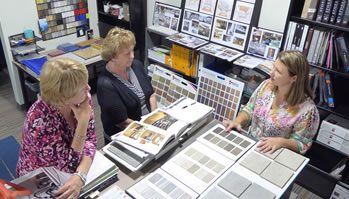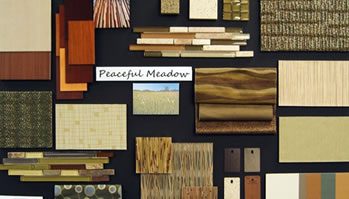Interior Design
Founded by an architect and interior designer in Columbia, MO in 1987, SOA was built upon a design philosophy that fully integrates interior finishes and furnishings with a building’s overall design.
What kind of project needs an Interior Designer?
Not every project requiring an architecture firm necessitates the expertise of an Interior Designer. But for the projects that do, there is no substitution for our on-staff, NCIDQ certified designer involved from schematic design through construction administration. Working with an Interior Designer is an investment in the parts of a building that people will most often see, feel, maintain and remember. Interior Design services are crucial for projects that are critically concerned with:
-
Clean-ability, Infection Control, and Maintenance of Surfaces
In Healthcare, Education, Food Service, or similar buildings, our Interior Designer will specify materials that meet cleanliness and safety standards, and reduce long term maintenance issues. -
Branding and Creating a Company Image
Corporations, Offices, or Retail Spaces benefit greatly from SOA’s Interior Design consultation to successfully translate corporate culture or graphics into three-dimensional space. -
Ergonomics and Productivity
Where occupants spend long amounts of time, for example, offices, schools, and manufacturing facilities, our Interior Designer can recommend furniture, cabinetry configurations, or noise controlling materials to create more pleasant and productive work spaces. -
Creating a Consistency at Multiple Facilities
SOA’s Interior Designer helps set standards for our college campus, bank, and institutional clients so that each location reflects a consistent look and can be maintained with the same equipment, training and cleaning products. -
Addressing Existing Finishes
For renovations, our Interior Designer helps determine which finishes can remain and be matched to new materials, or if the space should be updated completely, depending on the client’s goals and condition of existing products.
What will SOA’s Interior Designer contribute to the project?
Involving SOA’s Interior Designer early in the project results in a cohesive set of drawings and specifications so that a client gets more accurate bids and construction that truly reflects the design intent. Our Interior Designer is typically involved in some or all the following categories:
Space Planning
- Designing floor plans based on program, either independently or with project architect
- Recommending furnishings, either independently or with a furniture dealer
- Verifying that space sizes and configurations will accommodate the desired number of occupants, furniture arrangements, etc.
- Planning for future growth within a space or in future expansions
- Developing transition and phasing plans to minimize disruption to the client during construction
Construction Administration Phase
- Submittal Review – Verifying that contractor is procuring materials in accordance with specifications
- Jobsite Visits – Verifying that materials are being installed correctly
- “Punchlist” – Conducting final on-site review with architect and identifying work that does not conform to the specifications and drawings
Aesthetics
- Coordinating interior finishes with overall project vision
- Procuring material samples and creating finish boards for the client’s feedback and direction
- Developing interior renderings of design options
- Developing concepts for wayfinding, signage, or donor recognition
Product Selection
- Selecting finishes that achieve client’s desired aesthetic within budget provided
- Determining the most functional product (i.e. flooring, wall finishes, floor transitions, trim, ceiling types, door slabs & frames, casework & countertops, toilet partitions, bathroom accessories, etc.) for each application. Guiding the client through selection of these products based on the following criteria:



